Quentin Duval
Movie Gen: A Cast of Media Foundation Models
Oct 17, 2024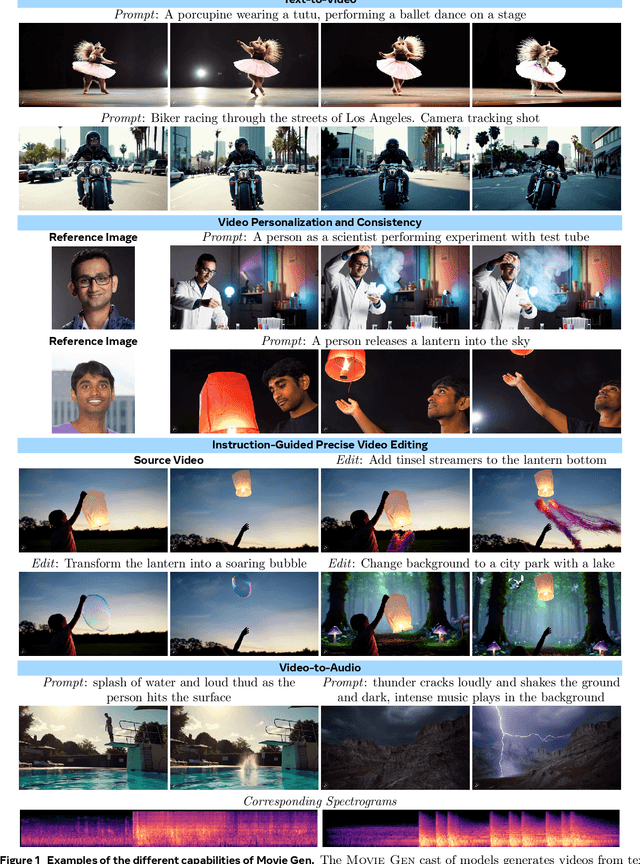

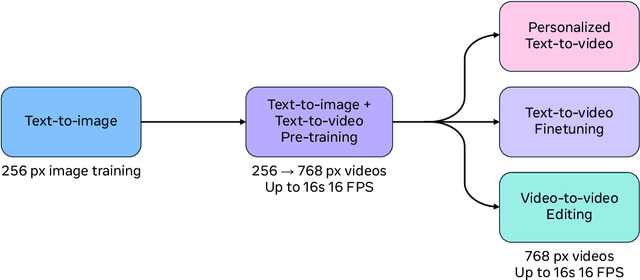
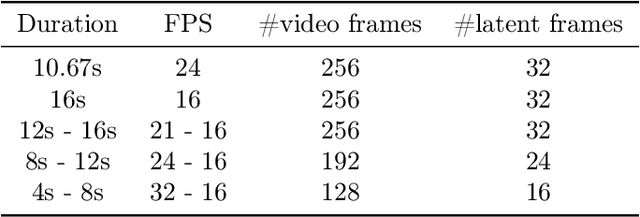
Abstract:We present Movie Gen, a cast of foundation models that generates high-quality, 1080p HD videos with different aspect ratios and synchronized audio. We also show additional capabilities such as precise instruction-based video editing and generation of personalized videos based on a user's image. Our models set a new state-of-the-art on multiple tasks: text-to-video synthesis, video personalization, video editing, video-to-audio generation, and text-to-audio generation. Our largest video generation model is a 30B parameter transformer trained with a maximum context length of 73K video tokens, corresponding to a generated video of 16 seconds at 16 frames-per-second. We show multiple technical innovations and simplifications on the architecture, latent spaces, training objectives and recipes, data curation, evaluation protocols, parallelization techniques, and inference optimizations that allow us to reap the benefits of scaling pre-training data, model size, and training compute for training large scale media generation models. We hope this paper helps the research community to accelerate progress and innovation in media generation models. All videos from this paper are available at https://go.fb.me/MovieGenResearchVideos.
Emu Video: Factorizing Text-to-Video Generation by Explicit Image Conditioning
Nov 17, 2023Abstract:We present Emu Video, a text-to-video generation model that factorizes the generation into two steps: first generating an image conditioned on the text, and then generating a video conditioned on the text and the generated image. We identify critical design decisions--adjusted noise schedules for diffusion, and multi-stage training--that enable us to directly generate high quality and high resolution videos, without requiring a deep cascade of models as in prior work. In human evaluations, our generated videos are strongly preferred in quality compared to all prior work--81% vs. Google's Imagen Video, 90% vs. Nvidia's PYOCO, and 96% vs. Meta's Make-A-Video. Our model outperforms commercial solutions such as RunwayML's Gen2 and Pika Labs. Finally, our factorizing approach naturally lends itself to animating images based on a user's text prompt, where our generations are preferred 96% over prior work.
FACET: Fairness in Computer Vision Evaluation Benchmark
Aug 31, 2023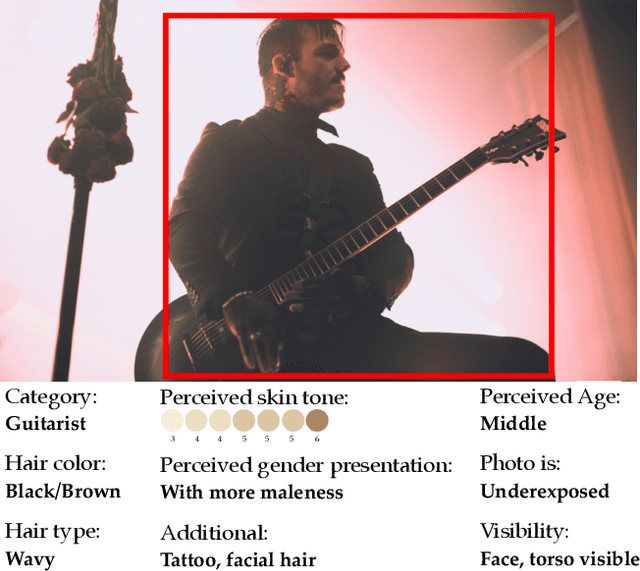
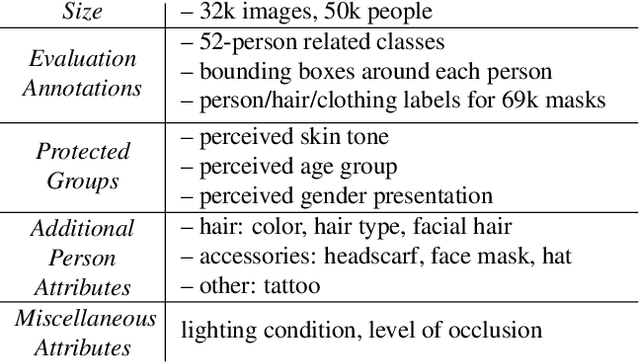

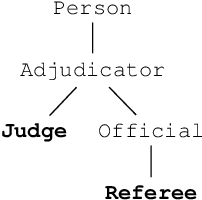
Abstract:Computer vision models have known performance disparities across attributes such as gender and skin tone. This means during tasks such as classification and detection, model performance differs for certain classes based on the demographics of the people in the image. These disparities have been shown to exist, but until now there has not been a unified approach to measure these differences for common use-cases of computer vision models. We present a new benchmark named FACET (FAirness in Computer Vision EvaluaTion), a large, publicly available evaluation set of 32k images for some of the most common vision tasks - image classification, object detection and segmentation. For every image in FACET, we hired expert reviewers to manually annotate person-related attributes such as perceived skin tone and hair type, manually draw bounding boxes and label fine-grained person-related classes such as disk jockey or guitarist. In addition, we use FACET to benchmark state-of-the-art vision models and present a deeper understanding of potential performance disparities and challenges across sensitive demographic attributes. With the exhaustive annotations collected, we probe models using single demographics attributes as well as multiple attributes using an intersectional approach (e.g. hair color and perceived skin tone). Our results show that classification, detection, segmentation, and visual grounding models exhibit performance disparities across demographic attributes and intersections of attributes. These harms suggest that not all people represented in datasets receive fair and equitable treatment in these vision tasks. We hope current and future results using our benchmark will contribute to fairer, more robust vision models. FACET is available publicly at https://facet.metademolab.com/
The effectiveness of MAE pre-pretraining for billion-scale pretraining
Mar 23, 2023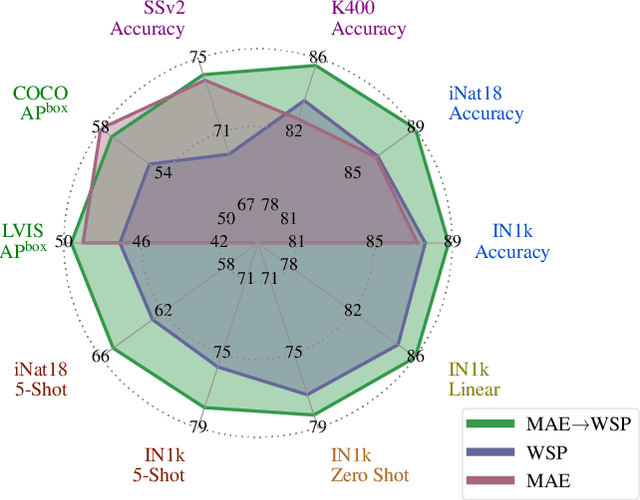


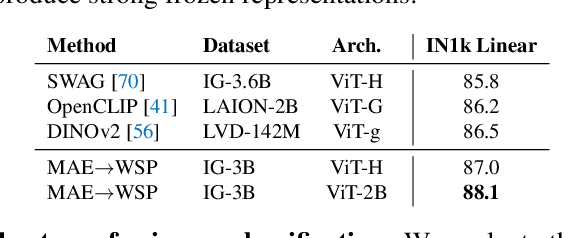
Abstract:This paper revisits the standard pretrain-then-finetune paradigm used in computer vision for visual recognition tasks. Typically, state-of-the-art foundation models are pretrained using large scale (weakly) supervised datasets with billions of images. We introduce an additional pre-pretraining stage that is simple and uses the self-supervised MAE technique to initialize the model. While MAE has only been shown to scale with the size of models, we find that it scales with the size of the training dataset as well. Thus, our MAE-based pre-pretraining scales with both model and data size making it applicable for training foundation models. Pre-pretraining consistently improves both the model convergence and the downstream transfer performance across a range of model scales (millions to billions of parameters), and dataset sizes (millions to billions of images). We measure the effectiveness of pre-pretraining on 10 different visual recognition tasks spanning image classification, video recognition, object detection, low-shot classification and zero-shot recognition. Our largest model achieves new state-of-the-art results on iNaturalist-18 (91.3%), 1-shot ImageNet-1k (62.1%), and zero-shot transfer on Food-101 (96.0%). Our study reveals that model initialization plays a significant role, even for web-scale pretraining with billions of images.
Learning to Substitute Ingredients in Recipes
Feb 15, 2023



Abstract:Recipe personalization through ingredient substitution has the potential to help people meet their dietary needs and preferences, avoid potential allergens, and ease culinary exploration in everyone's kitchen. To address ingredient substitution, we build a benchmark, composed of a dataset of substitution pairs with standardized splits, evaluation metrics, and baselines. We further introduce Graph-based Ingredient Substitution Module (GISMo), a novel model that leverages the context of a recipe as well as generic ingredient relational information encoded within a graph to rank plausible substitutions. We show through comprehensive experimental validation that GISMo surpasses the best performing baseline by a large margin in terms of mean reciprocal rank. Finally, we highlight the benefits of GISMo by integrating it in an improved image-to-recipe generation pipeline, enabling recipe personalization through user intervention. Quantitative and qualitative results show the efficacy of our proposed system, paving the road towards truly personalized cooking and tasting experiences.
A Simple Recipe for Competitive Low-compute Self supervised Vision Models
Jan 23, 2023Abstract:Self-supervised methods in vision have been mostly focused on large architectures as they seem to suffer from a significant performance drop for smaller architectures. In this paper, we propose a simple self-supervised distillation technique that can train high performance low-compute neural networks. Our main insight is that existing joint-embedding based SSL methods can be repurposed for knowledge distillation from a large self-supervised teacher to a small student model. Thus, we call our method Replace one Branch (RoB) as it simply replaces one branch of the joint-embedding training with a large teacher model. RoB is widely applicable to a number of architectures such as small ResNets, MobileNets and ViT, and pretrained models such as DINO, SwAV or iBOT. When pretraining on the ImageNet dataset, RoB yields models that compete with supervised knowledge distillation. When applied to MSN, RoB produces students with strong semi-supervised capabilities. Finally, our best ViT-Tiny models improve over prior SSL state-of-the-art on ImageNet by $2.3\%$ and are on par or better than a supervised distilled DeiT on five downstream transfer tasks (iNaturalist, CIFAR, Clevr/Count, Clevr/Dist and Places). We hope RoB enables practical self-supervision at smaller scale.
Self-Supervised Learning from Images with a Joint-Embedding Predictive Architecture
Jan 19, 2023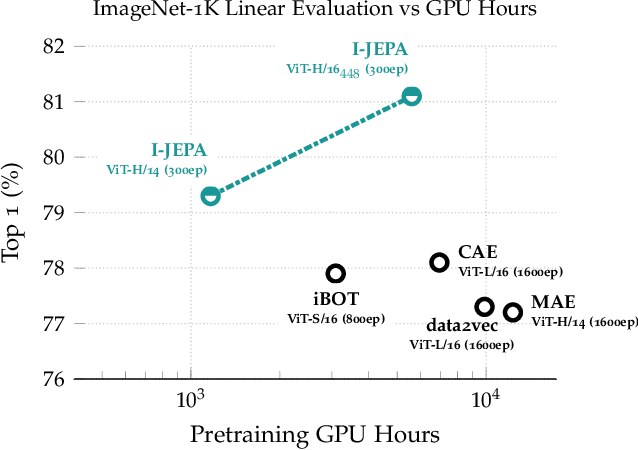
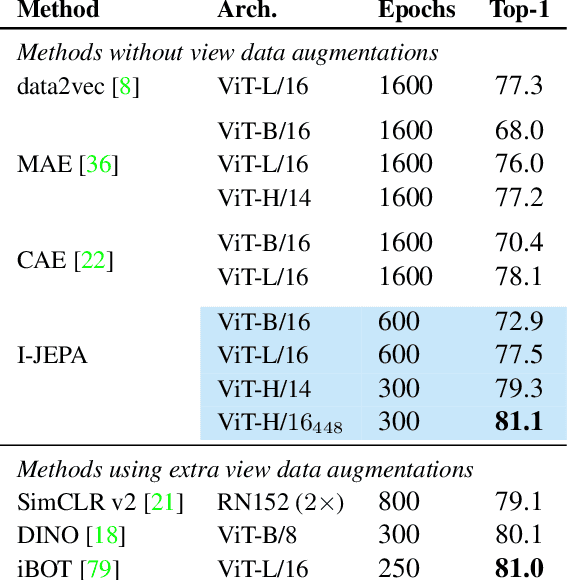

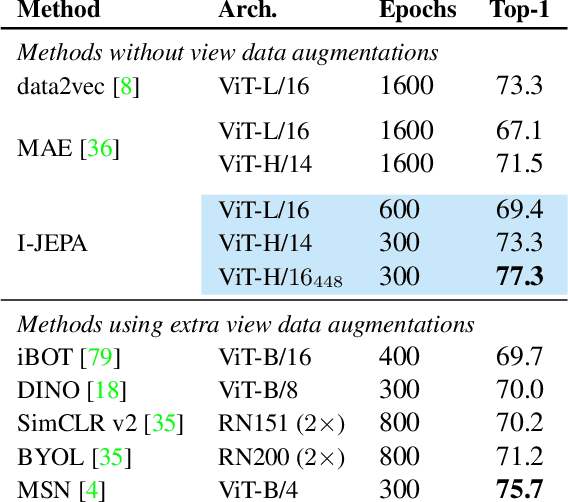
Abstract:This paper demonstrates an approach for learning highly semantic image representations without relying on hand-crafted data-augmentations. We introduce the Image-based Joint-Embedding Predictive Architecture (I-JEPA), a non-generative approach for self-supervised learning from images. The idea behind I-JEPA is simple: from a single context block, predict the representations of various target blocks in the same image. A core design choice to guide I-JEPA towards producing semantic representations is the masking strategy; specifically, it is crucial to (a) predict several target blocks in the image, (b) sample target blocks with sufficiently large scale (occupying 15%-20% of the image), and (c) use a sufficiently informative (spatially distributed) context block. Empirically, when combined with Vision Transformers, we find I-JEPA to be highly scalable. For instance, we train a ViT-Huge/16 on ImageNet using 32 A100 GPUs in under 38 hours to achieve strong downstream performance across a wide range of tasks requiring various levels of abstraction, from linear classification to object counting and depth prediction.
The Hidden Uniform Cluster Prior in Self-Supervised Learning
Oct 13, 2022



Abstract:A successful paradigm in representation learning is to perform self-supervised pretraining using tasks based on mini-batch statistics (e.g., SimCLR, VICReg, SwAV, MSN). We show that in the formulation of all these methods is an overlooked prior to learn features that enable uniform clustering of the data. While this prior has led to remarkably semantic representations when pretraining on class-balanced data, such as ImageNet, we demonstrate that it can hamper performance when pretraining on class-imbalanced data. By moving away from conventional uniformity priors and instead preferring power-law distributed feature clusters, we show that one can improve the quality of the learned representations on real-world class-imbalanced datasets. To demonstrate this, we develop an extension of the Masked Siamese Networks (MSN) method to support the use of arbitrary features priors.
Vision Models Are More Robust And Fair When Pretrained On Uncurated Images Without Supervision
Feb 22, 2022



Abstract:Discriminative self-supervised learning allows training models on any random group of internet images, and possibly recover salient information that helps differentiate between the images. Applied to ImageNet, this leads to object centric features that perform on par with supervised features on most object-centric downstream tasks. In this work, we question if using this ability, we can learn any salient and more representative information present in diverse unbounded set of images from across the globe. To do so, we train models on billions of random images without any data pre-processing or prior assumptions about what we want the model to learn. We scale our model size to dense 10 billion parameters to avoid underfitting on a large data size. We extensively study and validate our model performance on over 50 benchmarks including fairness, robustness to distribution shift, geographical diversity, fine grained recognition, image copy detection and many image classification datasets. The resulting model, not only captures well semantic information, it also captures information about artistic style and learns salient information such as geolocations and multilingual word embeddings based on visual content only. More importantly, we discover that such model is more robust, more fair, less harmful and less biased than supervised models or models trained on object centric datasets such as ImageNet.
 Add to Chrome
Add to Chrome Add to Firefox
Add to Firefox Add to Edge
Add to Edge